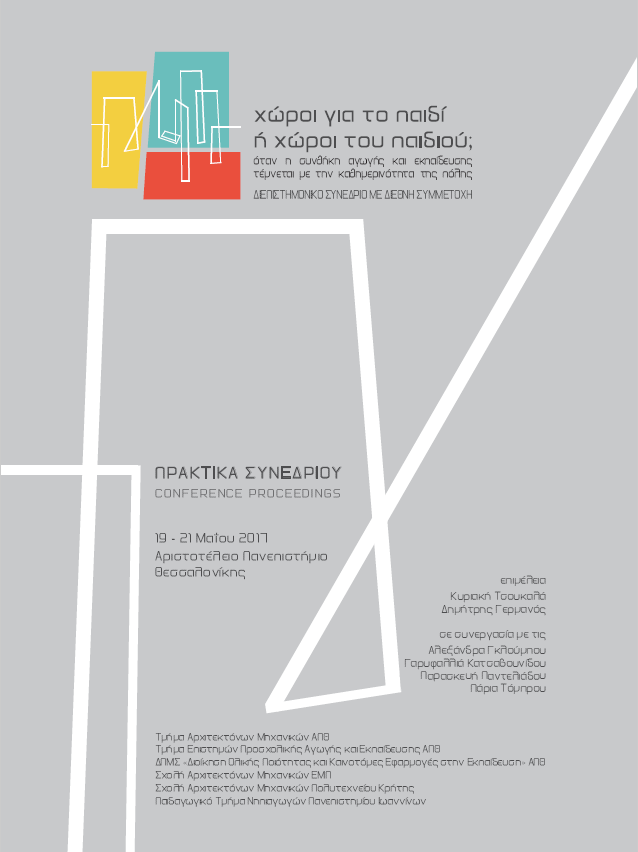Η παιδαγωγική ποιότητα, η πρόσβαση και ο εξοπλισμός των υπαίθριων χώρων παιχνιδιού για τα παιδιά με ειδικές εκπαιδευτικές ανάγκες

Περίληψη
Οι υπαίθριοι χώροι παιχνιδιού αποτελούν έναν πολύ σημαντικό παράγοντα στην ολόπλευρη ανάπτυξη, τόσο των τυπικά αναπτυσσόμενων παιδιών, όσο κι αυτών με ειδικές εκπαιδευτικές ανάγκες. Γι’ αυτό και κρίνεται απολύτως απαραίτητο οι χώροι αυτοί να είναι προσβάσιμοι και κατάλληλοι να χρησιμοποιηθούν από τα παιδιά με ειδικές εκπαιδευτικές ανάγκες. Στην παρούσα μελέτη, στόχος μας είναι να προσδιοριστεί ο βαθμός της προσβασιμότητας και της καταλληλότητας προς χρήση των υπαίθριων χώρων παιχνιδιού από τα παιδιά με ειδικές εκπαιδευτικές ανάγκες. Για τον σκοπό αυτό χρησιμοποιήσαμε τη σταθμισμένη κλίμακα αξιολόγησης RoSPA καθώς και ένα αυτοσχέδιο ερωτηματολόγιο το οποίο δόθηκε σε γονείς παιδιών με ειδικές εκπαιδευτικές ανάγκες.
Λεπτομέρειες άρθρου
- Ενότητα
- ΘΕΜΑΤΙΚΗ ΙΙ & ΙΙΙ Η πολυτροπική τομή χώρων εκπαίδευσης και πόλης & Η πόλη ως περιβάλλον μάθησης και αγωγής
Οι συγγραφείς των άρθρων που δημοσιεύονται διατηρούν τα δικαιώματα πνευματικής ιδιοκτησίας επί των άρθρων τους, δίνοντας το δικαίωμα της πρώτης δημοσίευσης.
Άρθρα που δημοσιεύονται διατίθενται με άδεια Creative Commons 4.0 και σύμφωνα με την άδεια μπορούν να χρησιμοποιούνται ελεύθερα, με αναφορά στο/στη συγγραφέα και στην πρώτη δημοσίευση για μη κερδοσκοπικούς σκοπούς.
Οι συγγραφείς μπορούν να καταθέσουν το άρθρο σε ιδρυματικό ή άλλο αποθετήριο ή/και να το δημοσιεύσουν σε άλλη έκδοση, με υποχρεωτική την αναφορά πρώτης δημοσίευσης στα πρακτικά.
Οι συγγραφείς ενθαρρύνονται να καταθέσουν σε αποθετήριο ή να δημοσιεύσουν την εργασία τους στο διαδίκτυο πριν ή κατά τη διαδικασία υποβολής και αξιολόγησής της.


